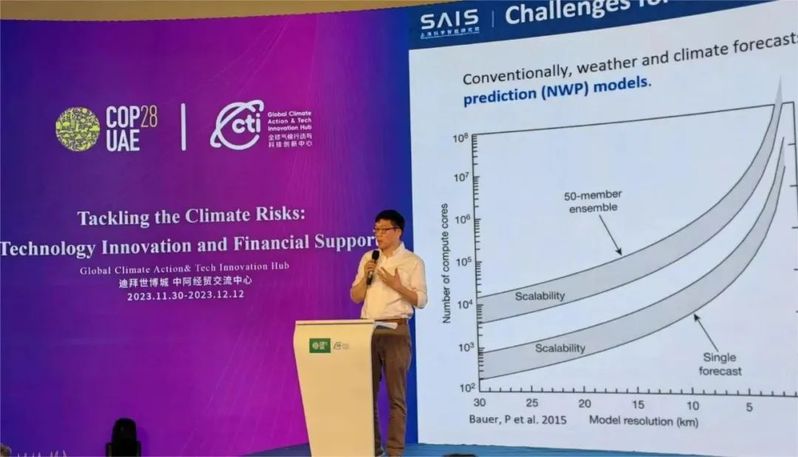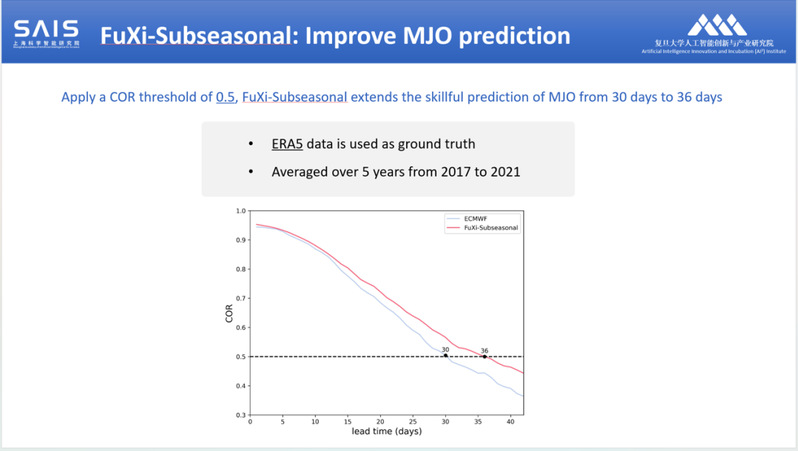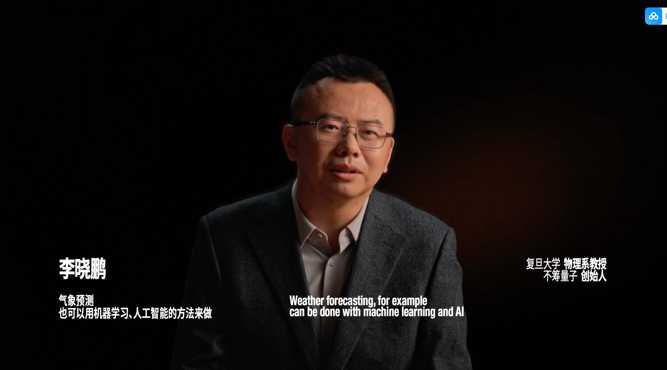Scientists have developed a new model for sub-seasonal forecasts using artificial intelligence (AI) technology.
The new model, FuXi-Subseasonal, developed by scientists from the Shanghai Academy of Artificial Intelligence for Science, Fudan University, and China's National Climate Center, represents a significant advancement in AI climate modeling by extending the forecasting range to 42 days.
The new model was unveiled Friday at the China Pavilion during the ongoing 28th session of the Conference of the Parties to the United Nations Framework Convention on Climate Change (COP28) in Dubai, United Arab Emirates, according to Fudan University.
According to scientists, sub-seasonal anomalies significantly contribute to high-impact climate events, so improving prediction skills at this timescale is a pressing requirement for advancing climate science.
The new model integrates the transformer architecture with guided random samples in a latent space to account for underlying uncertainty in sub-seasonal forecasts. By doing so, the model can generate forecasts with accuracy superior to those of the European Centre for Medium-Range Weather Forecasts (ECMWF), said Qi Yuan, director of the Shanghai Academy of Artificial Intelligence for Science and a professor of Fudan University.
The new model has overcome challenges related to inaccurate initial conditions and inadequate external forcing signals at the sub-seasonal timescales and addressed notable gaps in forecasts, he said.
This achievement addresses a long-standing technical challenge in climate change research. It offers the potential for more timely and accurate assessment of climate-related risks, Qi said.

Moreover, the new model has significantly advanced its ability to predict the atmospheric phenomenon of Madden-Julian Oscillation (MJO), extending the prediction skill of MJO from 30 to 36 days.
Accurate MJO prediction is important for agricultural planning, disaster preparedness and risk mitigation, and long-term climate research, Qi added.
The FuXi-Subseasonal, through its sub-seasonal forecasts of major weather processes like intense heat, severe cooling, and heavy precipitation, achieves a high level of precision unattainable by traditional technical methods, he said.

As the model advances with its cutting-edge AI capabilities, it is bound to make significant progress in addressing a broader spectrum of climate-related challenges, contributing to the empowerment of renewable energy development, construction of new types of electric power systems, ensuring agricultural food security, and achieving sustainable socio-economic transformation, Qi added.
The world needs to find more effective paths of technological innovation to address the increasingly severe global climate risks. AI holds tremendous potential in climate change risk management, said Wu Libo, a professor at Fudan University.
With such high-end technology, we can better address the risks of climate change, Wu added.
(END)
Presented by Fudan University Media Center
Source: Xinhua News
Editor: Wang Mengqi, Li Yijie
Designer: Ling Yiqi





